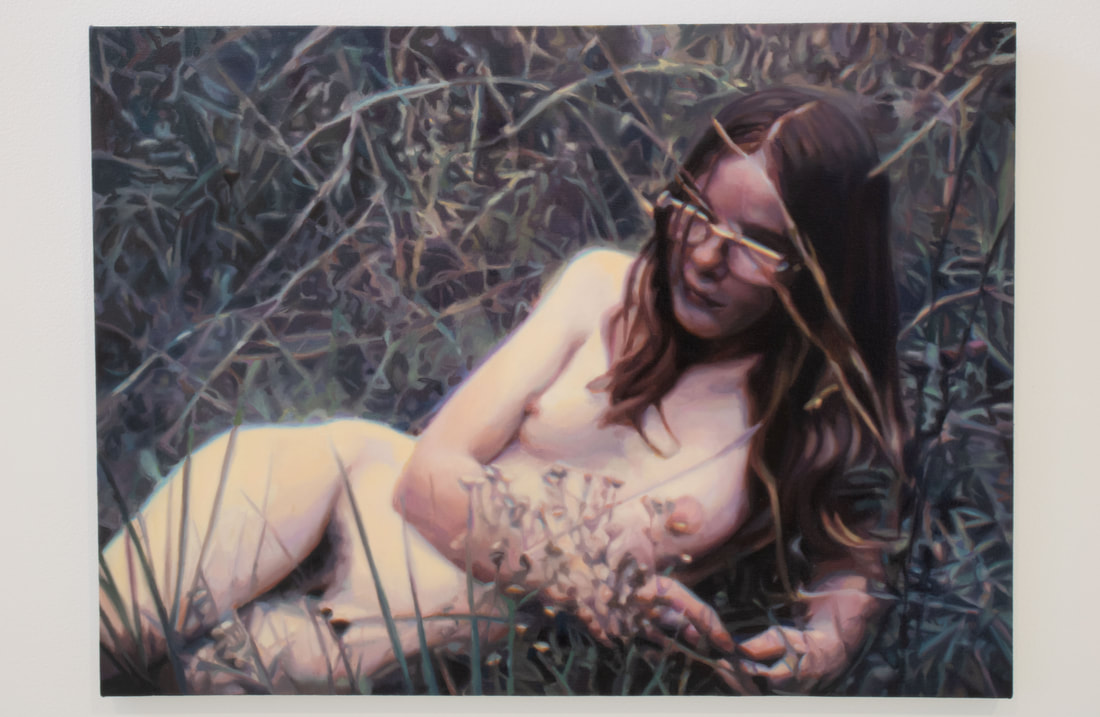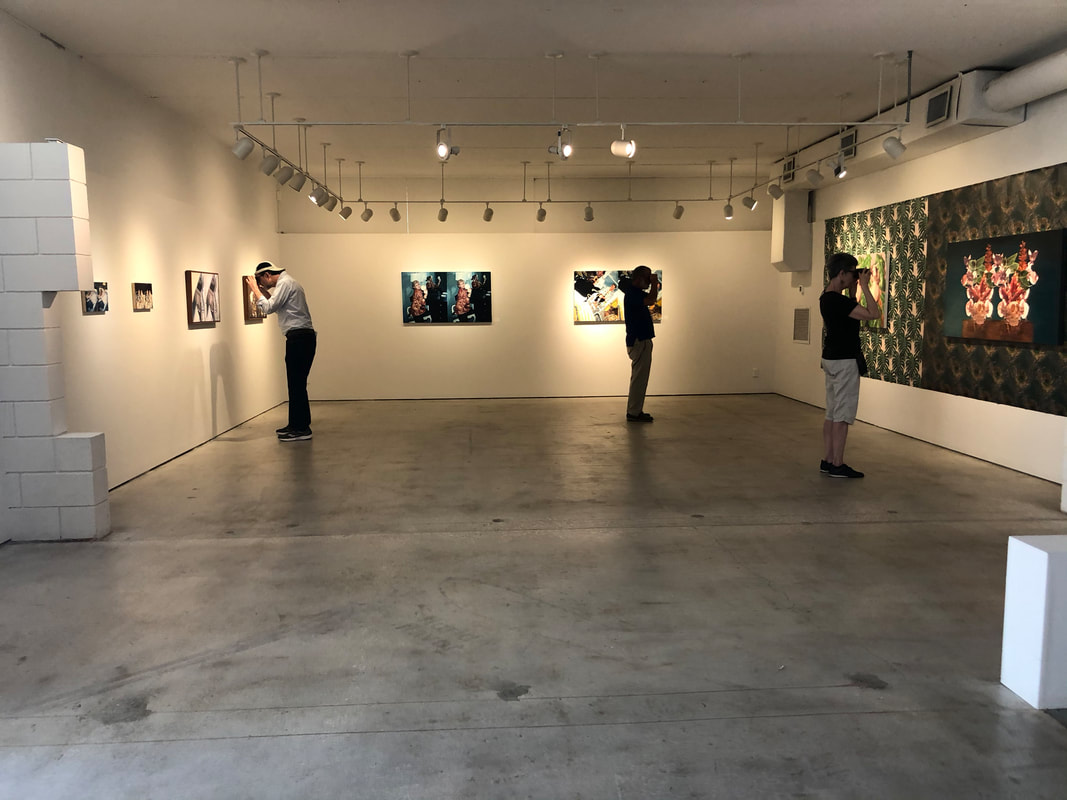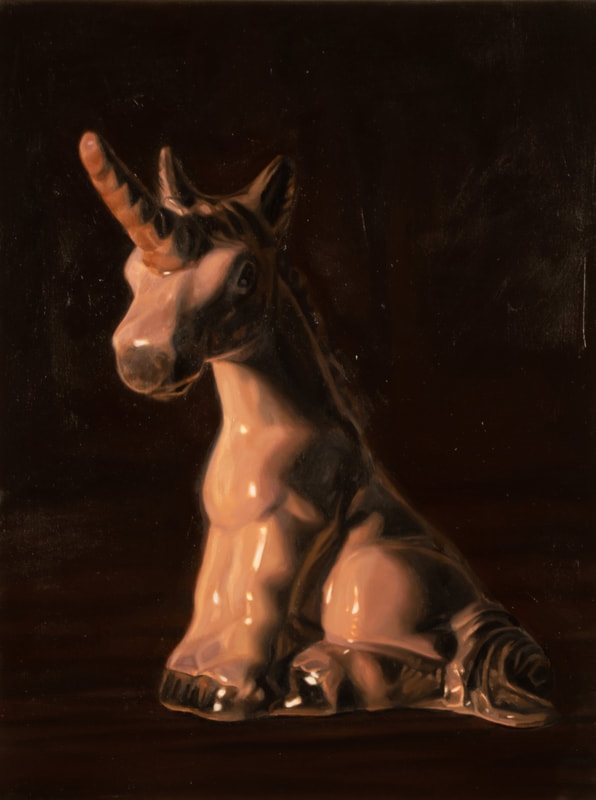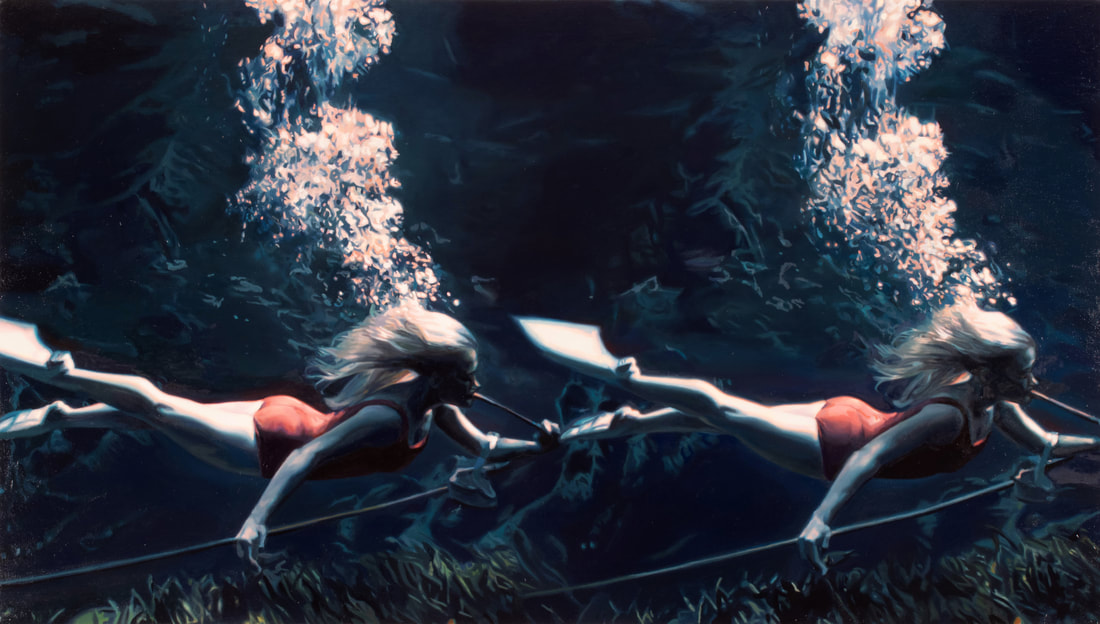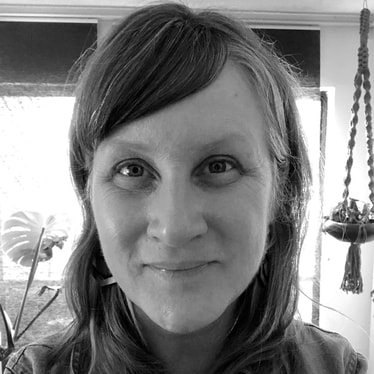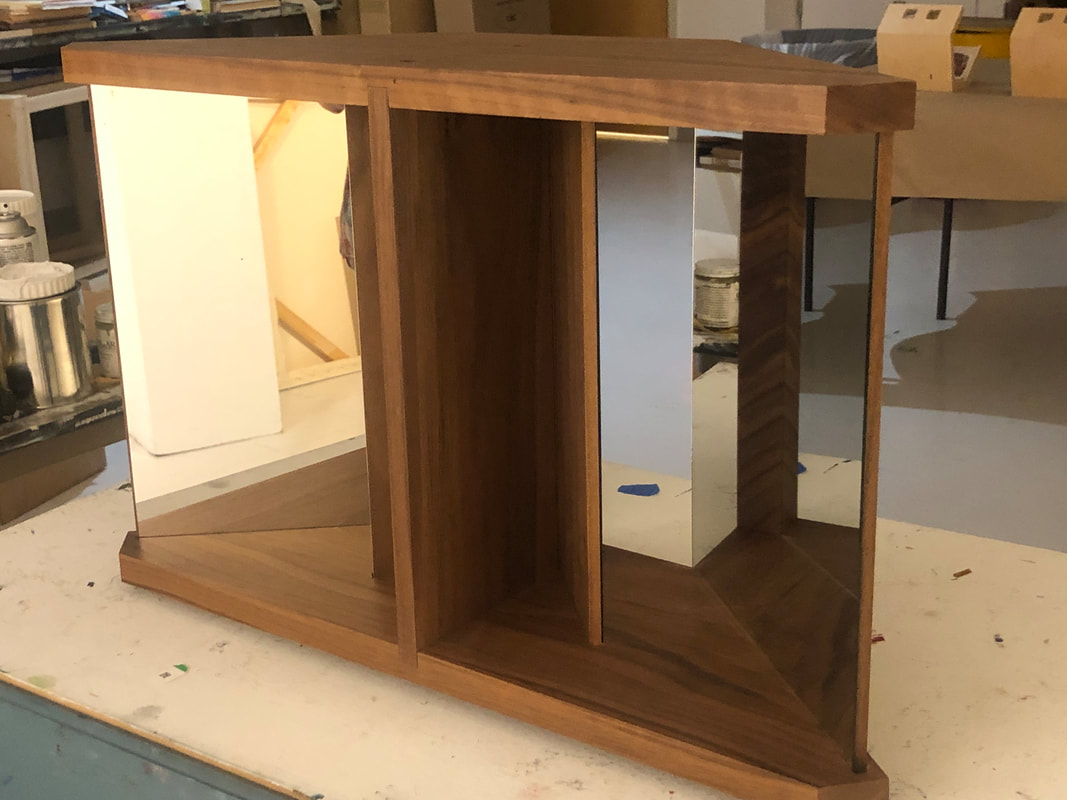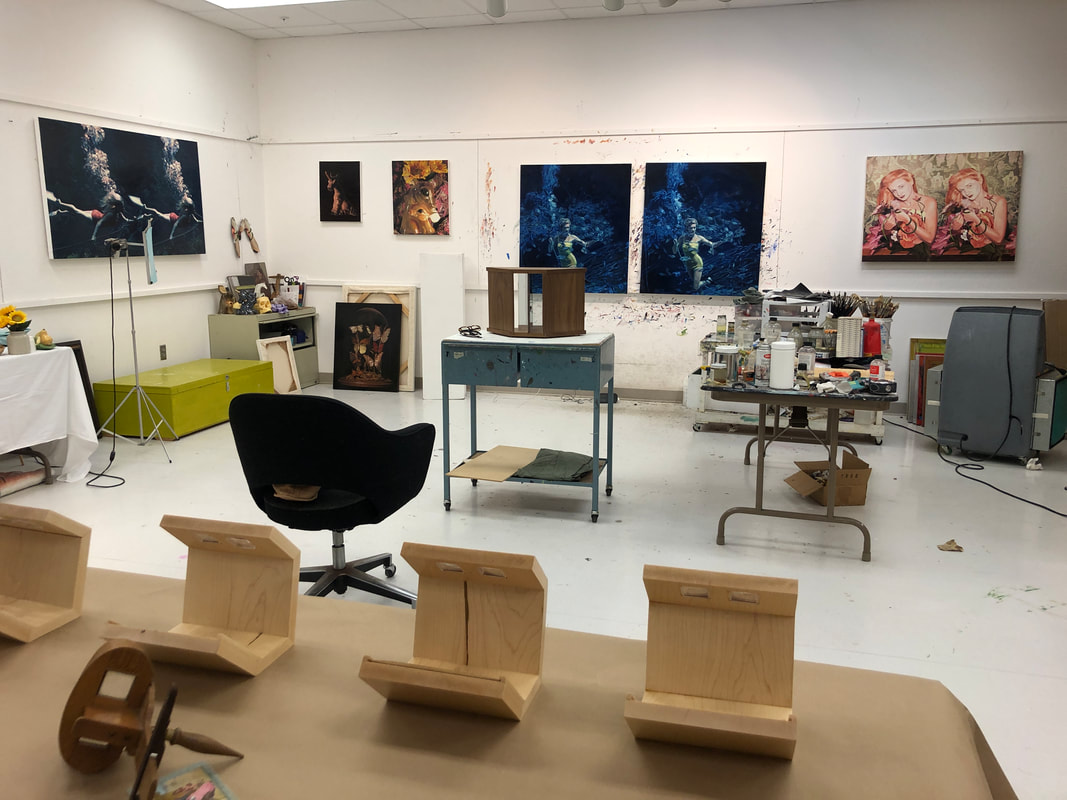Born in San Francisco, California and raised on O‘ahu, Hawai‘i, Kim Anderson lives and works in Bradenton, Florida. Her paintings examine the spectacle, psychology and circulation of our material possessions, including thrift store novelties and vernacular photography. Her works have been exhibited nationally in cities including New York, Atlanta, Ventura, Seattle, Portland, and Miami and featured in publications including New American Paintings, Studio Visit Magazine, Create! Magazine and Manifest INPA and MEA. She has been the recipient of the Sarasota Arts Council Ringling Tower Individual Artist Award, University of Florida Alumni Fellowship, and was a finalist for the 2018 Manifest Gallery Annual Manifest Prize. She received her MFA from the University of Florida and BFA from California College of Arts and Crafts and currently serves as Professor of Art at New College of Florida in Sarasota, FL.
Published on March 19th 2021. Artist responses collected in months previous.
What hurdles have you overcome this year and how have they affected your art practice?
Finding a work life balance is always challenging, and especially so now with the additional pressures of the pandemic. I was starting to feel like a lot of the hard work I had invested professionally was beginning to be recognized. Last year I received a promotion to full professor and was finding new ways to share the work I was creating in the studio, either locally or in juried exhibitions. Learning how to find time again to be in the studio was not easy after having twins, but I felt like a rhythm and schedule was beginning to emerge through the months and years of parental sleep deprivation. Just before the shutdown I was finally able to exhibit much of the work I had been focusing on since becoming a new mother--pulling multiple years of hard work together for one show. This was hugely satisfying because up until then everything was feeling a bit fragmented and disjointed. The work was really about creating a social and interactive space for painting so when the show came down just as we were going into lockdown, the timing created a really stark contrast to what I had been working to achieve.
How has your art practice been affected by the pandemic?
The pandemic has affected people in so many different ways. In my case it has meant having to reallocate more time for my family, specifically my children. With two small children at home this has meant facilitating all of their online educational needs, while teaching online while learning how to teach online. Learning how to navigate all of the software functions and digital commands has required an exorbitant amount of additional focus and energy. In the meantime, I felt like I was just reaching a place in my studio, which is on the college campus where I teach, where I felt I was ready to start some new work. To keep this momentum going I have been working digitally on painting concepts. While it is easy to get frustrated by not being able to physically be in the studio as regularly as I would like to be, I also value this time as a period for recalibration. I have to remind myself that this is not a race and that when the time is right, balance will be restored.
What support systems have you put in place to help keep your practice thriving amidst these unforeseeable circumstances?
For the time being, I realize I am extremely fortunate to have my teaching job, and cannot underestimate the level of support and security this has provided. That said, we are living in very uncertain times, and thinking about ways to support my family should something change is always in the back of my mind. Being able to channel my creative energy into a new collage course that I designed in response to the events of the past several months has been extremely rewarding. As a parent of two small children during a pandemic, with an immunocompromised partner, we have had to prioritize our health and wellbeing. When I have time to think about my creative work, that often means working on a small scale, working digitally or on something that can be picked up and put down on a moment’s notice. Once we figure out a regular routine, I am confident that I will be able to allocate more time for the studio. Right now, it’s about structuring the day in a way that is healthy, manageable and receptive to small creative surprises.
What methods do you employ to stay resilient in your art practice? What tips would you recommend to other artists who find staying resilient difficult?
Maintaining a sense of the bigger picture has felt really important. Finding ways to think about others, and to work with others is also helping to keep me focused. In my case, teaching offers a space where I can encourage and support others. Seeing the ways my students and former students grow is extremely rewarding. Art making can become entirely too solipsistic and I truly crave that social dimension to be able to keep myself going. I try not to get too caught up in my own thoughts. Staying busy is extremely important, so my advice is to do something for someone else, even if it just a small gesture. I desperately miss travel. Spending the summer designing a virtual curriculum, was not exactly what I had in mind for a vacation, but it has become a way to engage with something greater than myself. I have also been fortunate to have been able connect with former students and am finding ways begin an alum mentoring project. While not all entirely expected these experiences have been rewarding. Stay busy and try to think about others more would be my advice.
What have you learned about yourself as an artist this year?
I imagine it will take time to absorb and process the magnitude of the events that have shaped the past year. From a personal as well as a political perspective the year has offered a wide range of ups and downs. Making art will continue to be part of my life, it will always be there for me in the long run, but it might not always be a given and it may come in a variety of shapes and sizes. Reflecting back, I don’t think I ever would have imagined 20 years ago that I would be making the work I am making today. The process and our life experiences contribute in equal parts to this journey. As tactile, experiential learner, I gain so much from being in the studio, making things with my hands, but I realize too, that periods of growth can be challenging and require reflection. This might be a time to listen.
What hurdles have you overcome this year and how have they affected your art practice?
Finding a work life balance is always challenging, and especially so now with the additional pressures of the pandemic. I was starting to feel like a lot of the hard work I had invested professionally was beginning to be recognized. Last year I received a promotion to full professor and was finding new ways to share the work I was creating in the studio, either locally or in juried exhibitions. Learning how to find time again to be in the studio was not easy after having twins, but I felt like a rhythm and schedule was beginning to emerge through the months and years of parental sleep deprivation. Just before the shutdown I was finally able to exhibit much of the work I had been focusing on since becoming a new mother--pulling multiple years of hard work together for one show. This was hugely satisfying because up until then everything was feeling a bit fragmented and disjointed. The work was really about creating a social and interactive space for painting so when the show came down just as we were going into lockdown, the timing created a really stark contrast to what I had been working to achieve.
How has your art practice been affected by the pandemic?
The pandemic has affected people in so many different ways. In my case it has meant having to reallocate more time for my family, specifically my children. With two small children at home this has meant facilitating all of their online educational needs, while teaching online while learning how to teach online. Learning how to navigate all of the software functions and digital commands has required an exorbitant amount of additional focus and energy. In the meantime, I felt like I was just reaching a place in my studio, which is on the college campus where I teach, where I felt I was ready to start some new work. To keep this momentum going I have been working digitally on painting concepts. While it is easy to get frustrated by not being able to physically be in the studio as regularly as I would like to be, I also value this time as a period for recalibration. I have to remind myself that this is not a race and that when the time is right, balance will be restored.
What support systems have you put in place to help keep your practice thriving amidst these unforeseeable circumstances?
For the time being, I realize I am extremely fortunate to have my teaching job, and cannot underestimate the level of support and security this has provided. That said, we are living in very uncertain times, and thinking about ways to support my family should something change is always in the back of my mind. Being able to channel my creative energy into a new collage course that I designed in response to the events of the past several months has been extremely rewarding. As a parent of two small children during a pandemic, with an immunocompromised partner, we have had to prioritize our health and wellbeing. When I have time to think about my creative work, that often means working on a small scale, working digitally or on something that can be picked up and put down on a moment’s notice. Once we figure out a regular routine, I am confident that I will be able to allocate more time for the studio. Right now, it’s about structuring the day in a way that is healthy, manageable and receptive to small creative surprises.
What methods do you employ to stay resilient in your art practice? What tips would you recommend to other artists who find staying resilient difficult?
Maintaining a sense of the bigger picture has felt really important. Finding ways to think about others, and to work with others is also helping to keep me focused. In my case, teaching offers a space where I can encourage and support others. Seeing the ways my students and former students grow is extremely rewarding. Art making can become entirely too solipsistic and I truly crave that social dimension to be able to keep myself going. I try not to get too caught up in my own thoughts. Staying busy is extremely important, so my advice is to do something for someone else, even if it just a small gesture. I desperately miss travel. Spending the summer designing a virtual curriculum, was not exactly what I had in mind for a vacation, but it has become a way to engage with something greater than myself. I have also been fortunate to have been able connect with former students and am finding ways begin an alum mentoring project. While not all entirely expected these experiences have been rewarding. Stay busy and try to think about others more would be my advice.
What have you learned about yourself as an artist this year?
I imagine it will take time to absorb and process the magnitude of the events that have shaped the past year. From a personal as well as a political perspective the year has offered a wide range of ups and downs. Making art will continue to be part of my life, it will always be there for me in the long run, but it might not always be a given and it may come in a variety of shapes and sizes. Reflecting back, I don’t think I ever would have imagined 20 years ago that I would be making the work I am making today. The process and our life experiences contribute in equal parts to this journey. As tactile, experiential learner, I gain so much from being in the studio, making things with my hands, but I realize too, that periods of growth can be challenging and require reflection. This might be a time to listen.
Find Kim Anderson on Instagram
